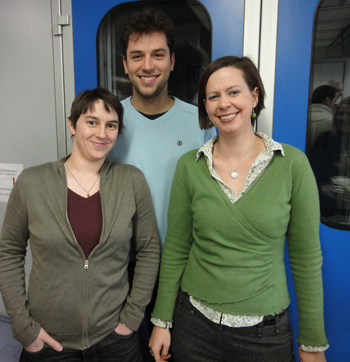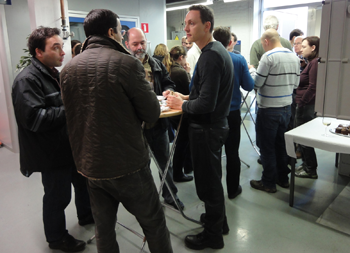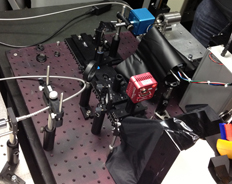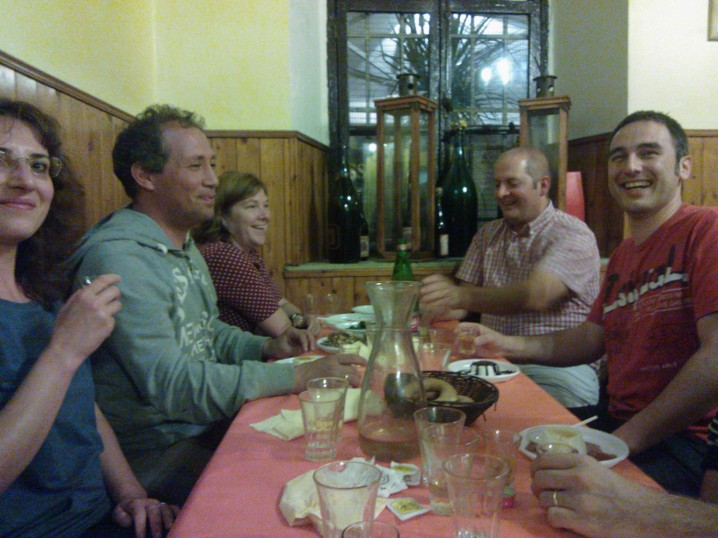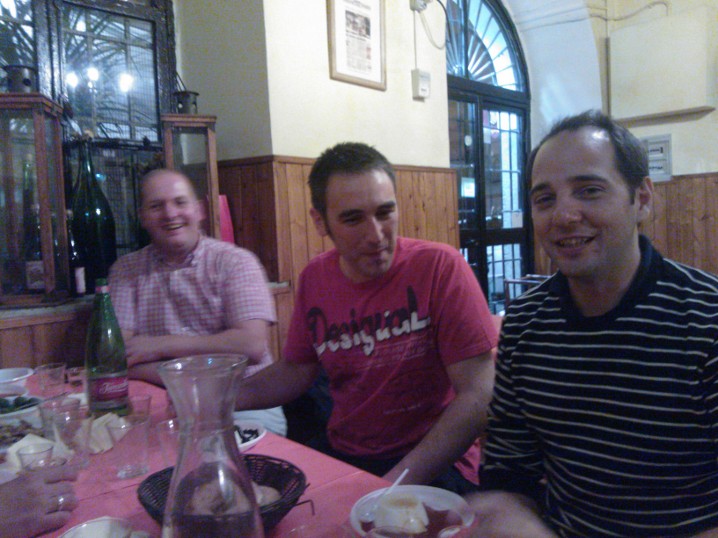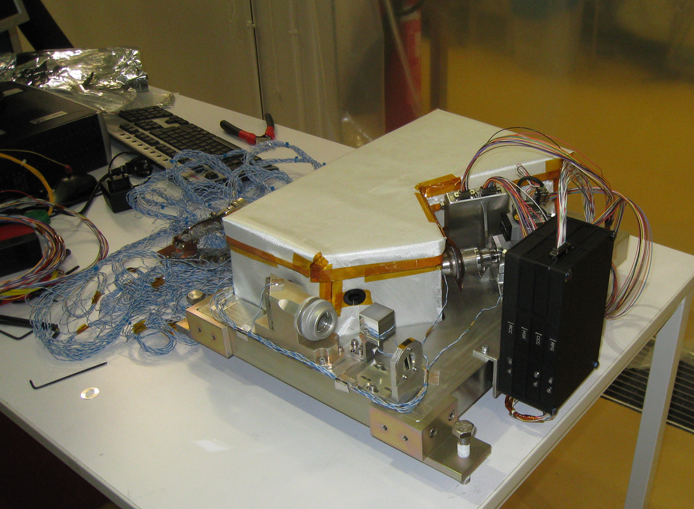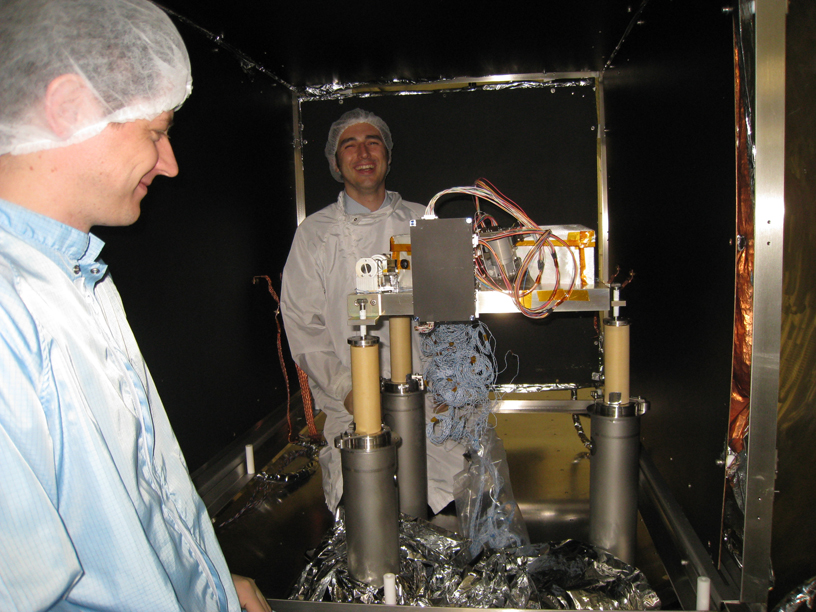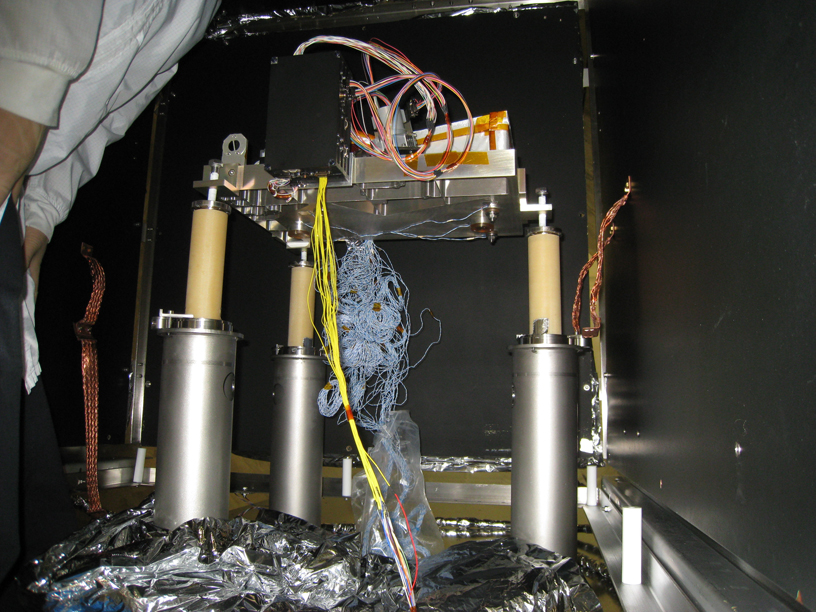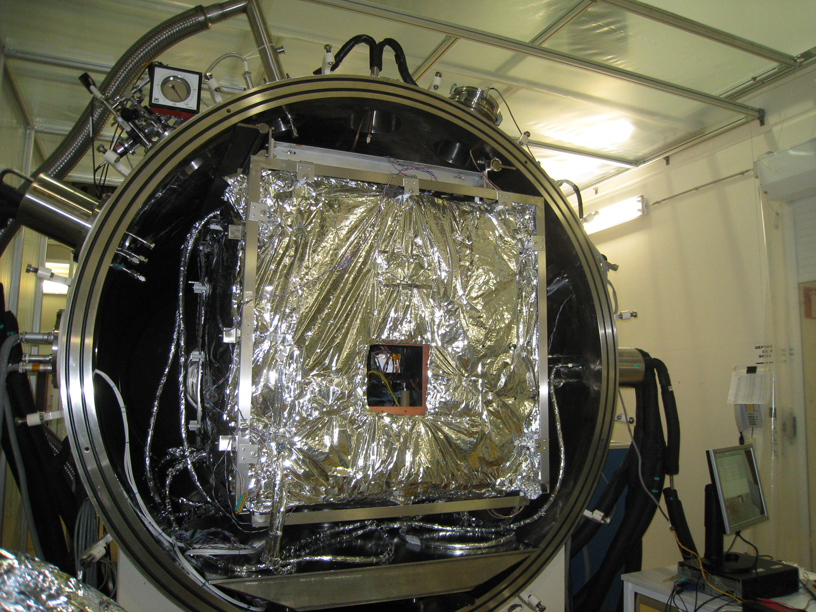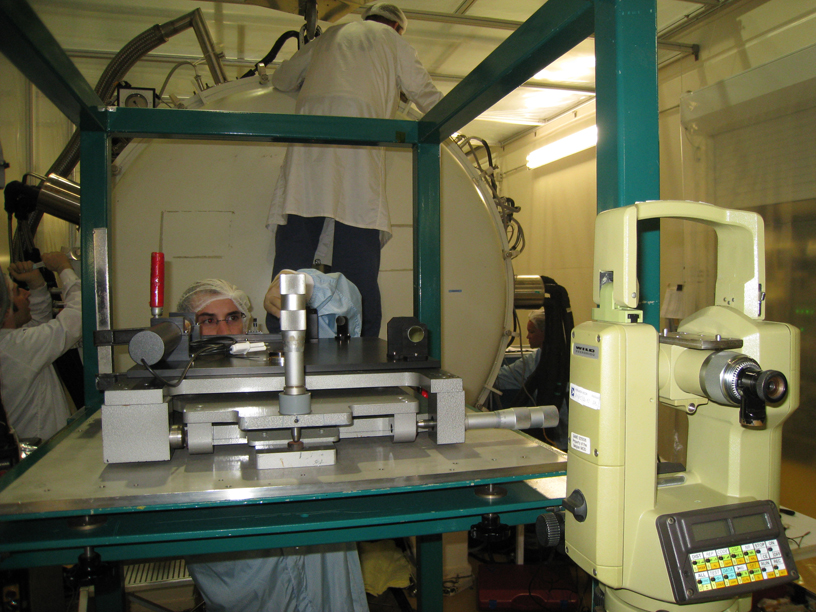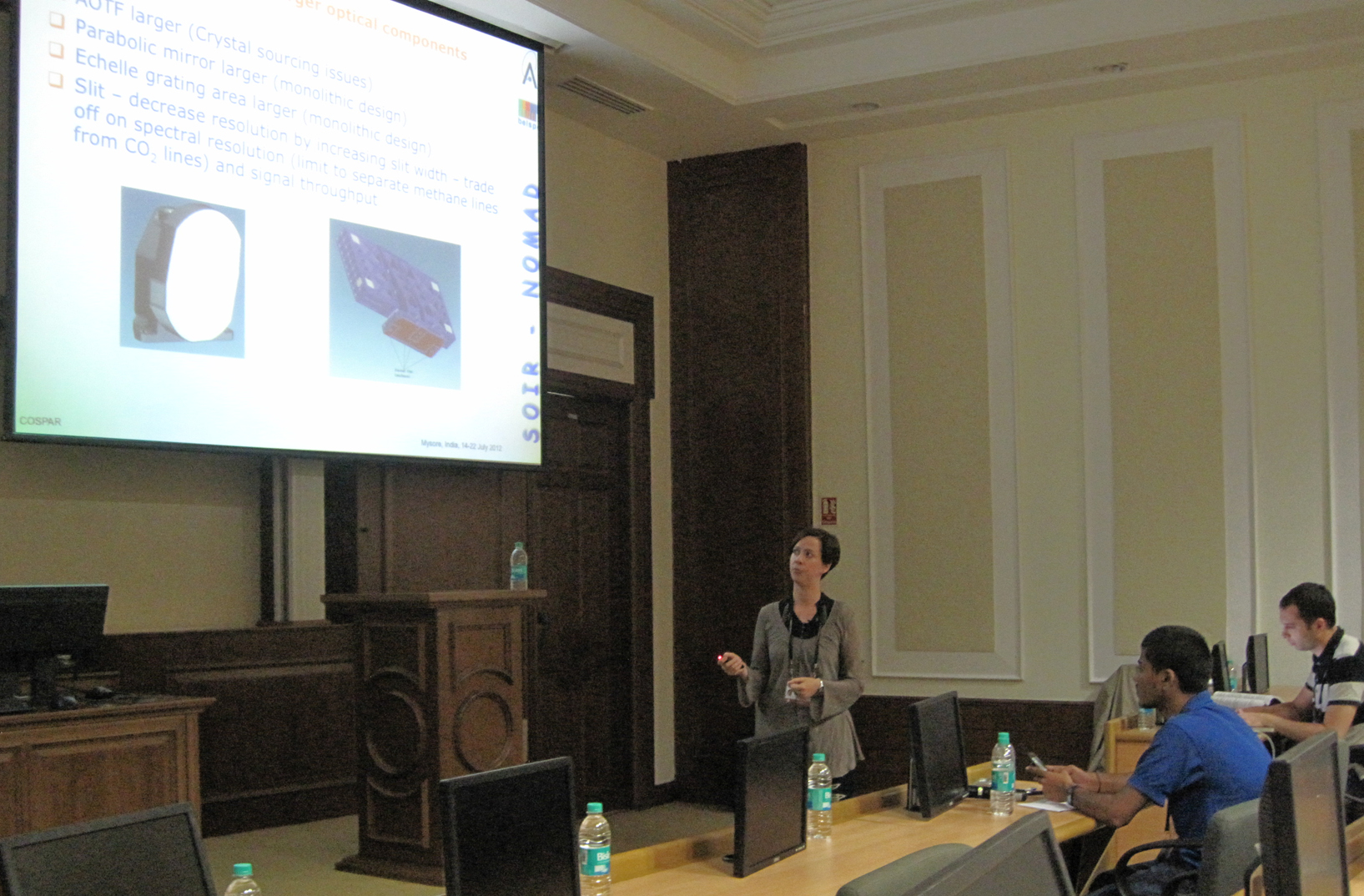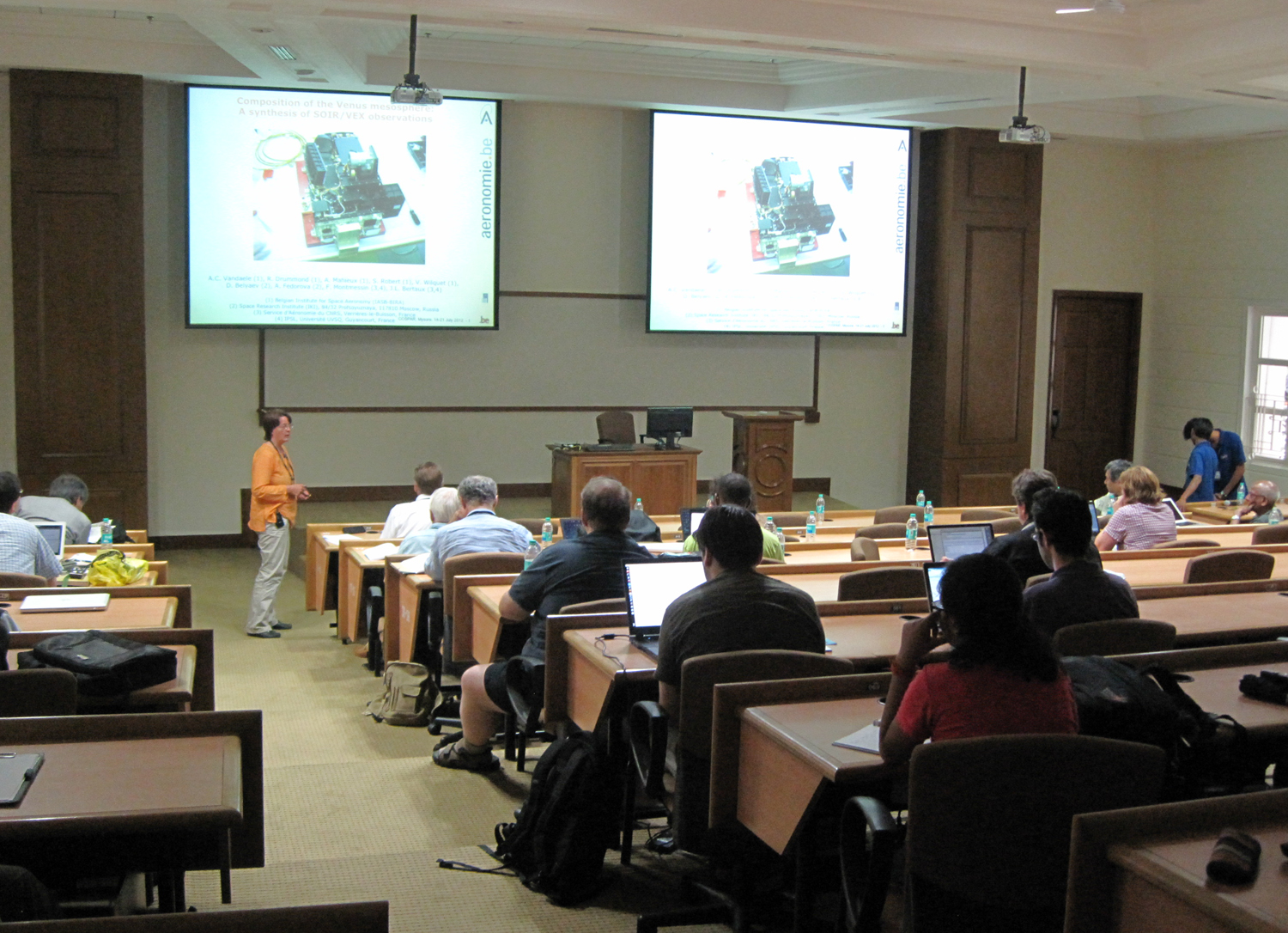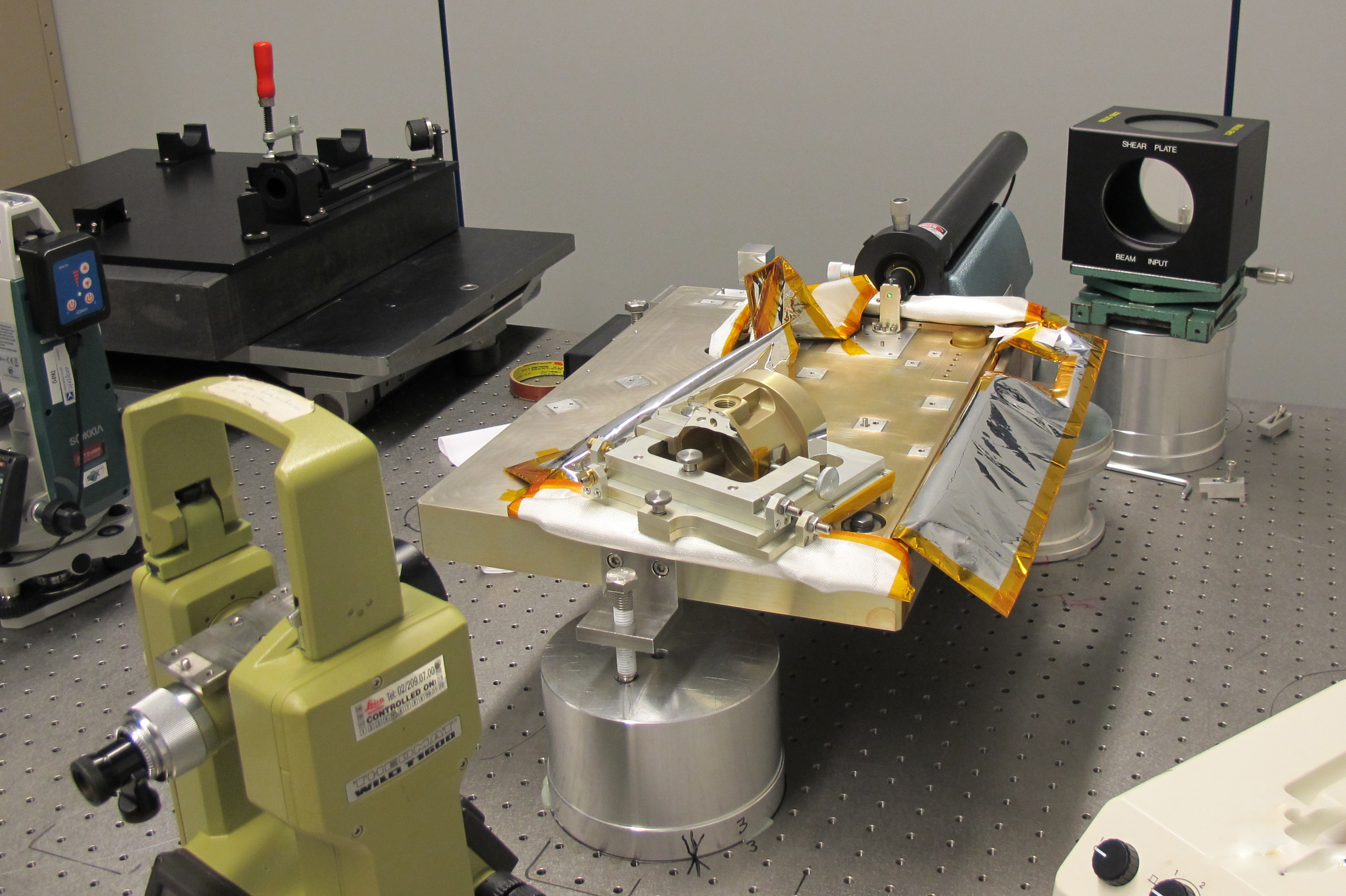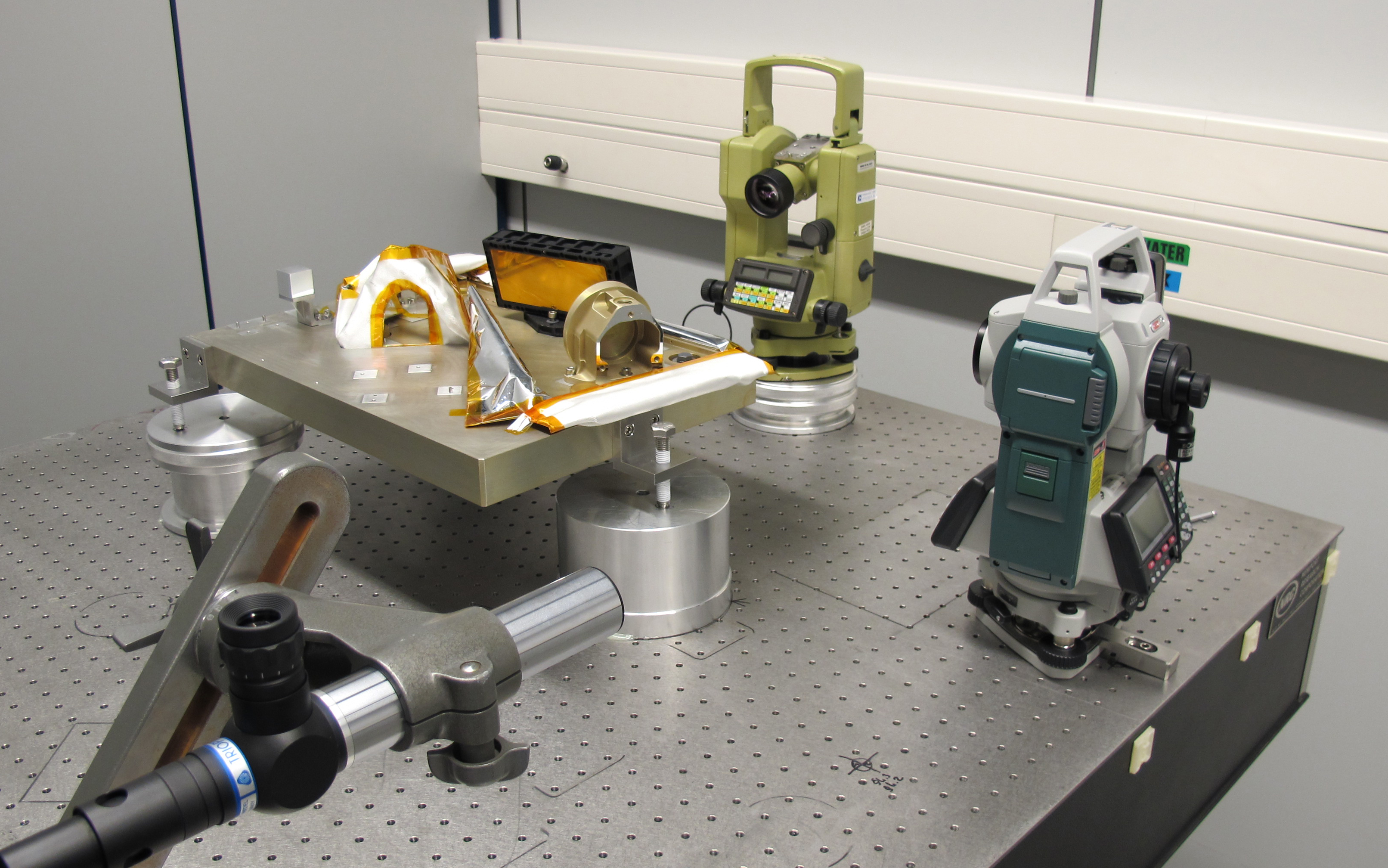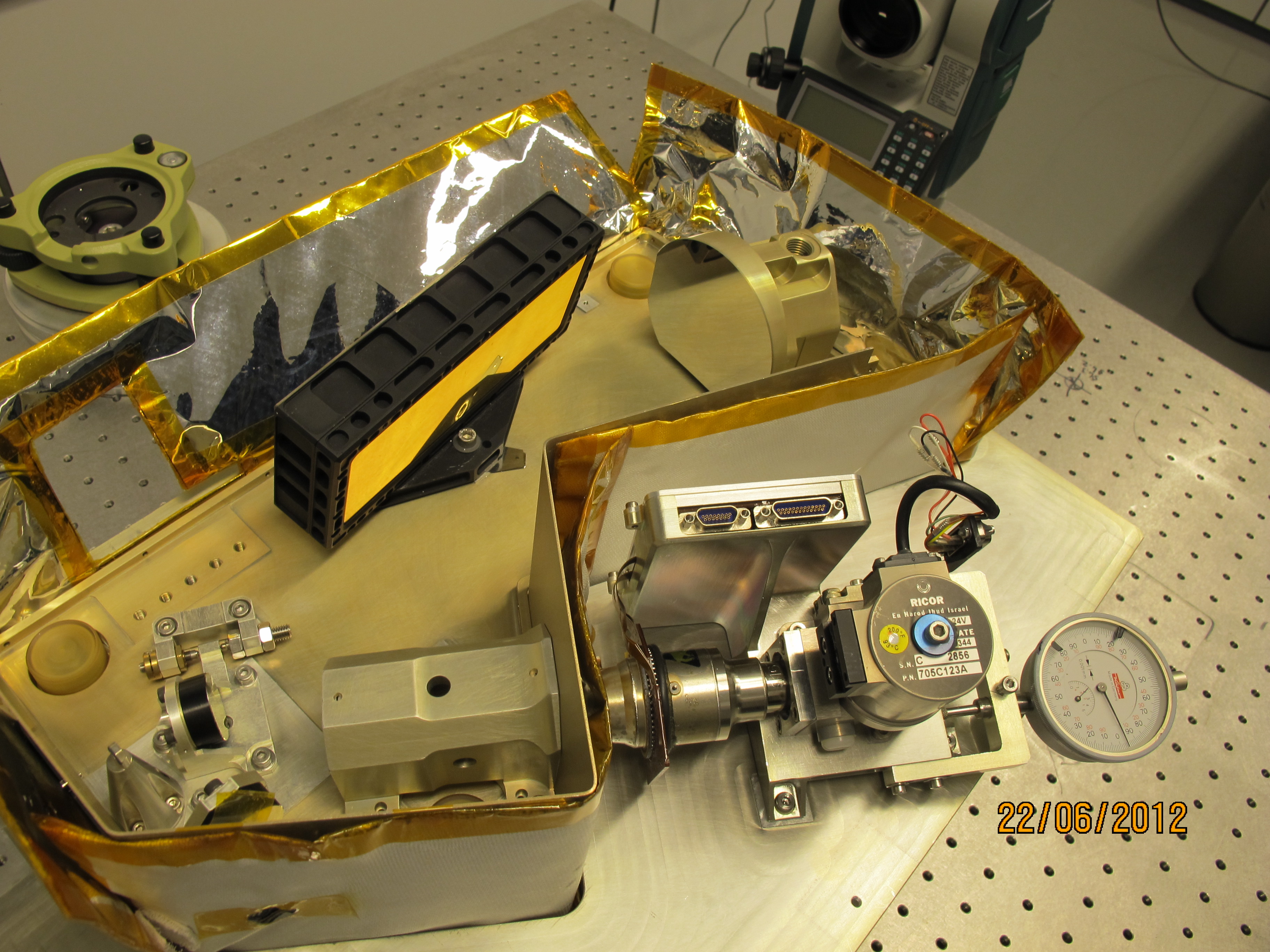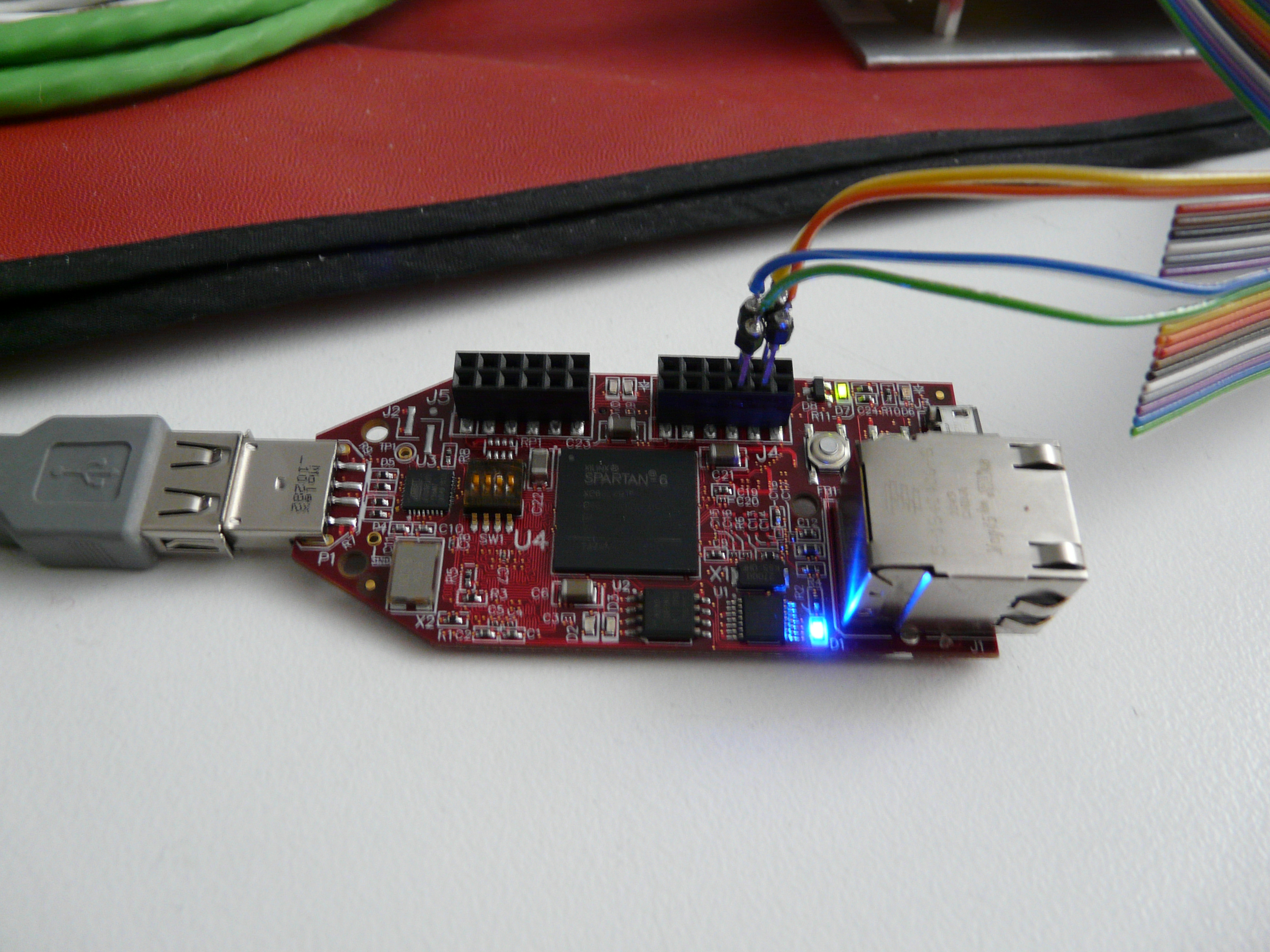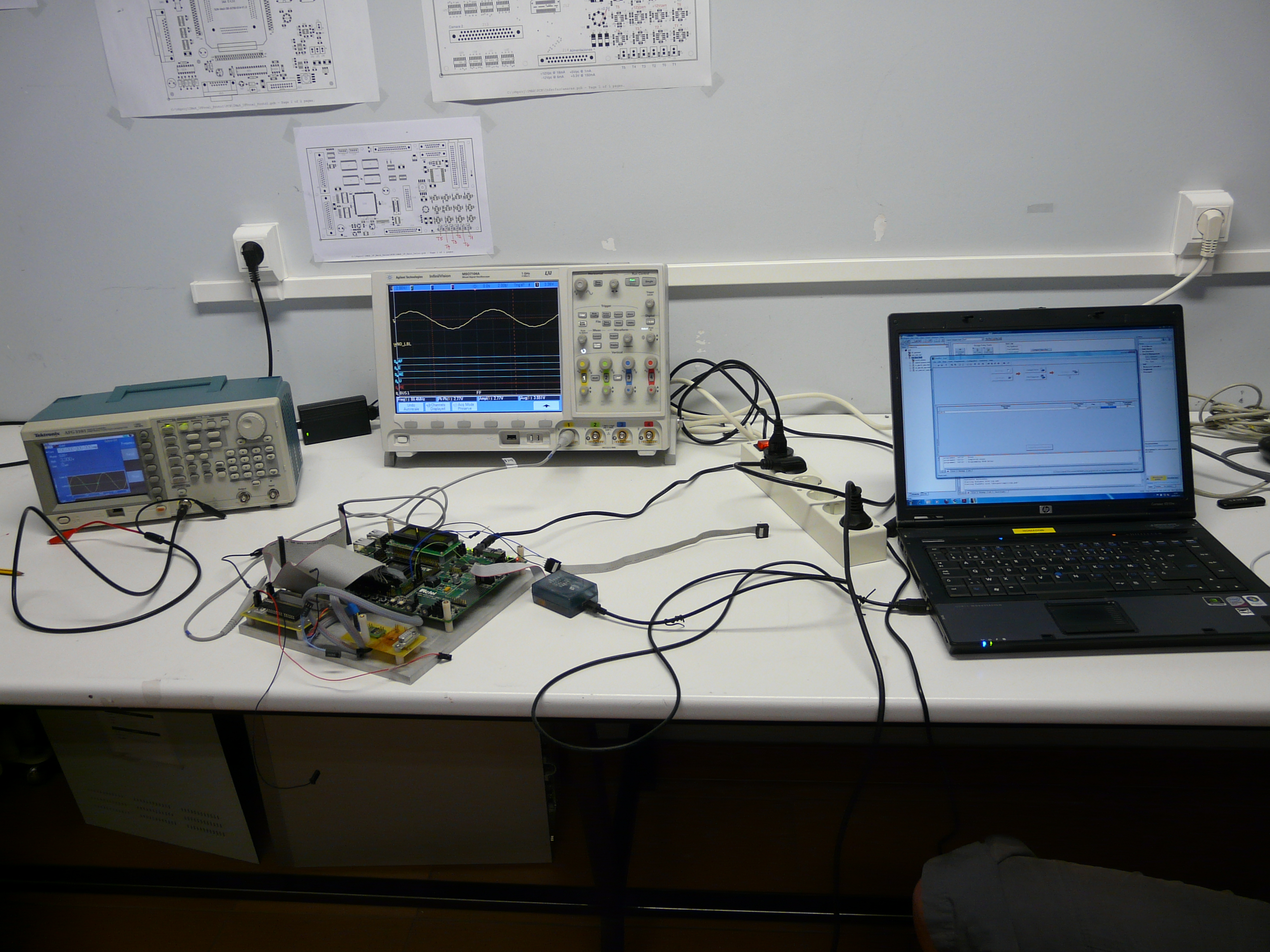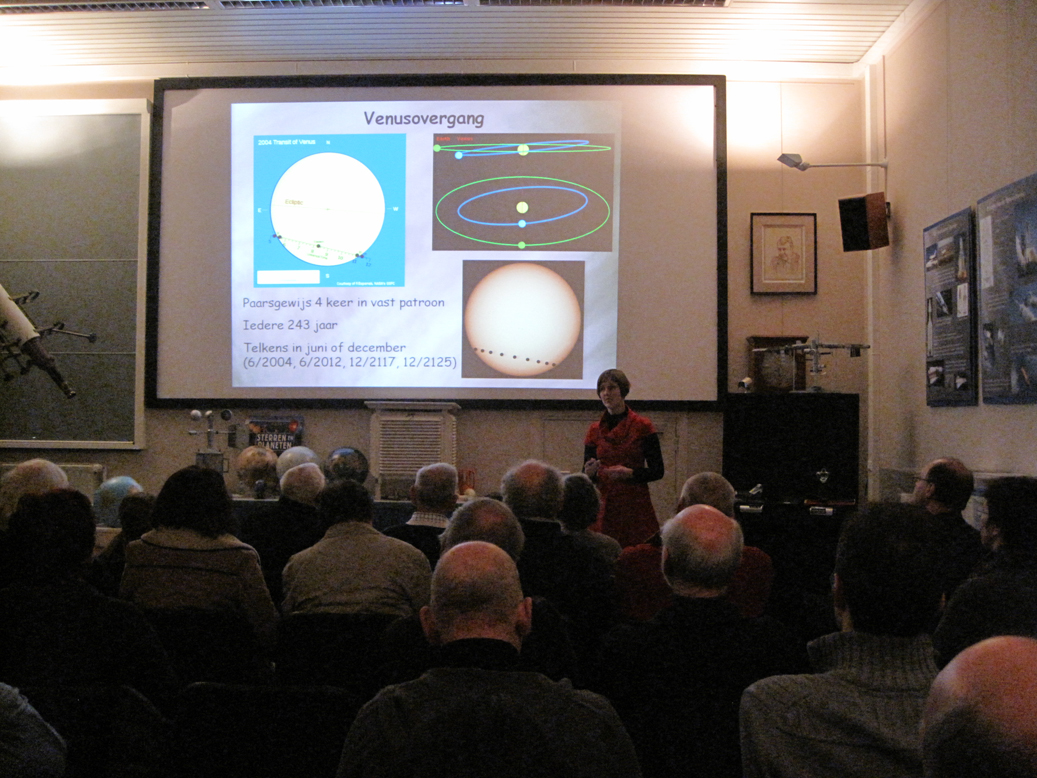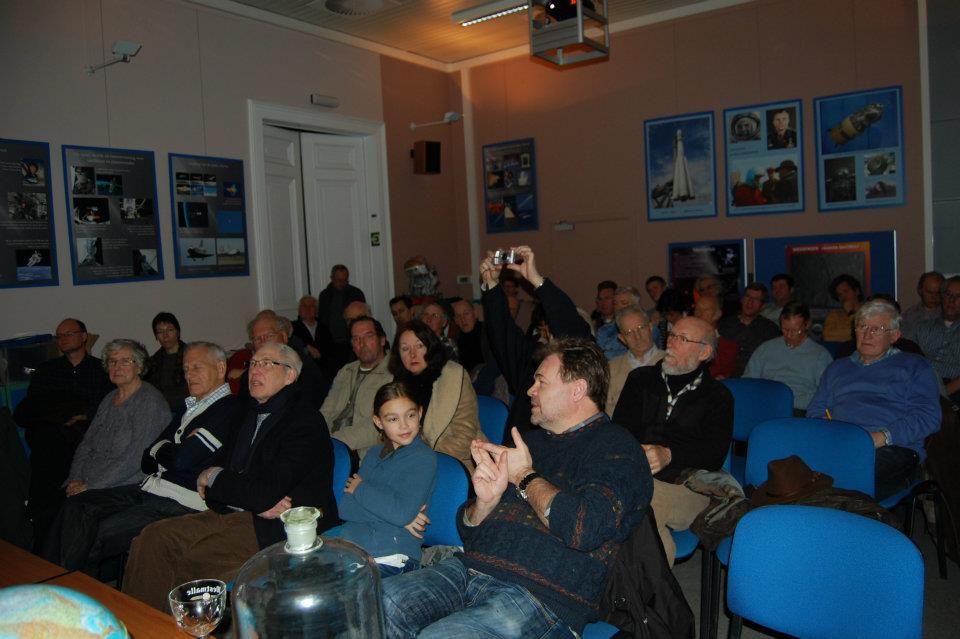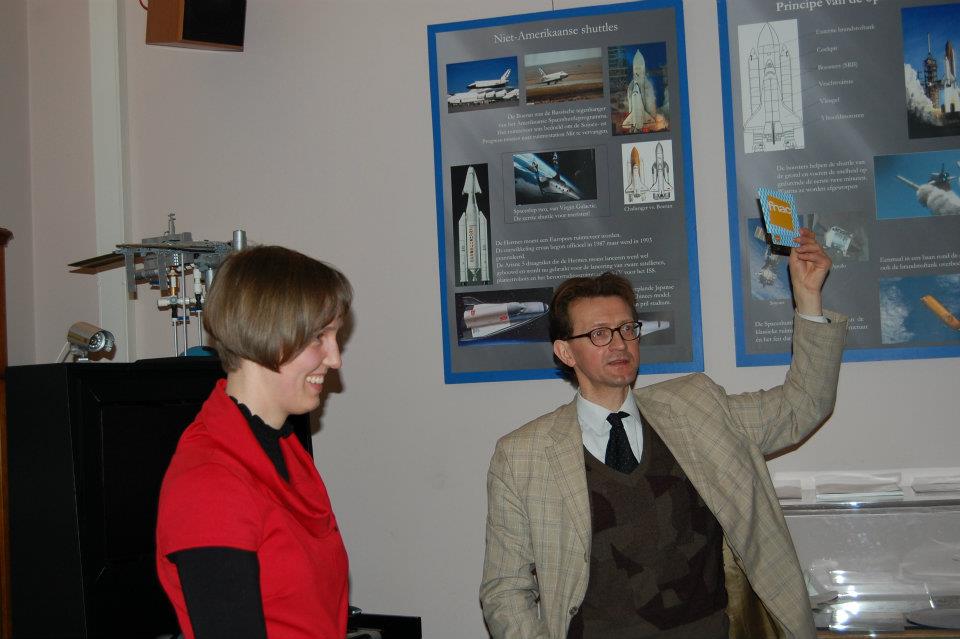 |
||||
|
Webstory: 2012 Christmas 2012 12 Dec 2012 - October and November have been busy months - with testing of an updated LNO prototype, as well as the telescopes of the UV channel. NOMAD's Belgian partners met to celebrate the end of a year full of challenges. A small lunch was held at IASB-BIRA in Brussels 11 December. Members of the Science Team; left to right:Severine Robert, Yannick Willame and Rachel Drummond New team members from the Royal Observatory of Brussels discuss with UVIS calibration engineer Cedric Depiesse from IASB-BIRA.
Testing of the UVIS prototype mirrors The prototypes of the two UVIS telescopes (nadir and solar occultation) were completed in November. IASB-BIRA, OIP, Lambda-X and ESA completed a Test Readiness Review. This is the test set-up at IASB-BIRA, where Lambda-X came to perform checks on the field of view of the telescopes - as well as examine the tranmission of the system at various wavelengths within UVIS's scientific domain of interest. The report on these test activities marks the end of Phase B activities for NOMAD. Phase C tasks have already begun - building up to CDR early next year!
NOMAD and TGO mentioned in The Hindu Times! 15 Nov 2012 - NOMAD cited in an article discussing the presence of methane on Mars. The Hindu Times reports on the non detection of CH4 announced last week by the Curiosity team. Curiosity is not the last chance to look more closely for methane in the near future: ExoMars, and in particular NOMAD, are being prepared to this goal.
Some news about Mars, methane, Curiosity and ExoMars TGO 5 Nov 2012 - Curiosity is looking hard to find some trace of methane. Up to now, nothing, or more precisely concentrations below the detection limit of the TDLS instrument. Implications for the ExoMars TGO? Nature examines the future possibilites to detect methane on Mars.
NOMAD 4th SWT and ICD signature! 14 Sept 2012 - This Friday was a very good day for NOMAD! The 4th Science Working Team meeting was held in Frascati 13-14 September, with participation from members of the Russian instrument ACS development team. This was a very useful meeting that brought together a team who hadn't seen each other much in a year. Of course, 2011-2012 was a busy year for NOMAD with a lot of technical developlment work and documentation to produce. The technical update part of the meeting was a whole morning of presentations! We then discussed various science discoveries that influence the science that NOMAD will be performing in 2018, as well as ongoing work on the data pipeline. But Friday afternoon was the breakthrough point. Throughout the years that ExoMars has existed, in various forms, 38 instruments have been selected. NOMAD is the first instrument on ExoMars to have a signed Interface Control Document. This major milestone occurred during a teleconference, attended by the PI and PM of NOMAD from ESRIN in Frascati, after which we could celebrate with excellent pasta and grappa!
NOMAD LNO Prototype Tests in themal-vacuum chambers in Liège 20-24 August 2012 - The LNO prototype underwent a week of thermal-vacuum tests at Centre Spatiale de Liège. This is the mock-up of the LNO channel seen before mounting in the cold chamber. The white wrapping is multi-layer insulation (MLI) to insulate the cold spectrometer section (-100° C) from the parts outside it that sit at about zero degrees. The instrument (cold and hot parts) is placed inside the thermal-vacuum chamber that will cool everything down to zero degrees and remove all air to simulate space conditions. We want to study how heat will be conducted (not radiated or convected) from hot to cold components in space - where there is no air, so this is the best way to get a representative result. You can see here NOMAD System Engineer Stefan Lesschaeve and CSL test engineer Tanguy Thibert in full clean-room gear. The instrument must be kept as clean as possible (no dust, hairs, grease etc.) Once the instrument is safely installed, a cold shroud is placed around it and the part that must be cooled to -100° is attached to a liquid nitrogen supply. Optical engineers set up a laser outside the chamber to provide a light source for the instrument. In this way we can compare the signal measured at room temperature, 0°, -80°, -100° and -110°, back up to room temperature - examining the change in intensity of the signal (and background noise levels) but also the shape of the image. Since optical components may move or shrink slightly at such different temperatures, the shape of the image tells us as much as the intensity of the flux received at the detector.
15-22 July 2012 - Members of the NOMAD team attended the Cospar International Conference in Mysore, India. They presented scientific results from the SOIR instrument on Venus Express, as well as the NOMAD instrument under development for ExoMars. They made new contacts with members of ISAC, the Indian Space Research Organisation's Satellite Centre in Bangalore, where the Space Astronomy group is developing an instrument for an Indian mission to Mars that works in a similar way as NOMAD. A day of discussions was devoted to examining the different challenges each group has had to overcome and how to set up collaboration for the scientific benefit of both teams. The team members also participated in a Venus Workshop in the far southern Indian state of Kerala.... Read More
LNO prototype testing - Test Readiness Review 2 July 2012 - This week the Test Readiness Review for the NOMAD LNO prototype takes place. The LNO channel is cryo-cooled - the spectrometer optics need to get down to -100 degrees C in order to decrease the thermal background and increase the signal to noise ratio. In order to cool just these optics, the baseplate has an insert for the cold section, insulated and isolated with multi-layer insulation and attached to a 4-layer radiator on the top of the spacecraft.
In order to check that the cryo-baseplate will shrink and expand with changing temperature easily with respect to the larger baseplate it is inserted in, and to check that the optics can be aligned at room temperature such that perfect image quality is obtained at -100 degrees, the cryo- and ambient temperature parts of the LNO channel were built in the cleanrooms at OIP. Shown here above is the alignment of the parabolic mirror and the grating at OIP. This photo shows the full prototype that will be tested in the thermal-vacuum chambers at CSL. Some of the parts are spares from SOIR, and some are new components, ordered for this test. This is because some optical holder designs had to change to deal with the colder operating temperatures. The Test Readiness Review is a review of the hardware and test plans and procedures to be certain that everything is ready to conduct the tests. The tests are expensive and time consuming, so the NOMAD team must be certain beforehand that the results will be representative of the NOMAD instrument.
Electronics testing in Granada 15 May 2012 - The electronics team from IASB-BIRA went to visit our partners in IAA in Granada, Spain for electronics testing last week. This is a very important step in the development of NOMAD, as the electronics that control the channels within NOMAD are developed in Belgium (infra-red channels) and the UK (UV-Vis channel), whereas the electronics that communicate from the instrument to the spacecraft are developed in Spain. It is vital to check that the electronics will interface correctly with each other (i.e. talk to each other!). There were 2 days of testing communication at various levels - from just the two boards, up to simulated channel data being sent all the way to a PC simulating the spacecraft.
Our Spanish colleagues also designed the power distribution board for the NOMAD instrument, and a prototype was brought back to Belgium to check that it can power up the infra-red detectors.
Public outreach in Gent 10 March 2012 - Our document manager and public outreach representative, Dr. Sofie Delanoye, gave a special presentation in Gent - not only about NOMAD but also about Venus. NOMAD's older sister, SOIR, is onboard the Venus Express satellite and has been making measurements since 2006. This year is a special year for Venus, since in June there will be a very rare event - a transit of Venus in front of the Sun. This will be visible from many points on the Earth and scientists from IASB-BIRA will participate in many public outreach activities on this occasion. Sofie presented Venus, the transit, the SOIR instrument as well as other IASB-BIRA planetary aeronomy activities to a very good turnout!
In other news: the NOMAD team has submitted all the documents necessary for ESA and TAS to prepare the Preliminary Design Review. This is a significant milestone in the development of a space instrument, and will be held in Brussels at the end of March. News & press releases 2014 & 2015
|
|||
